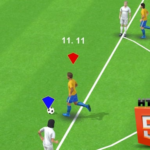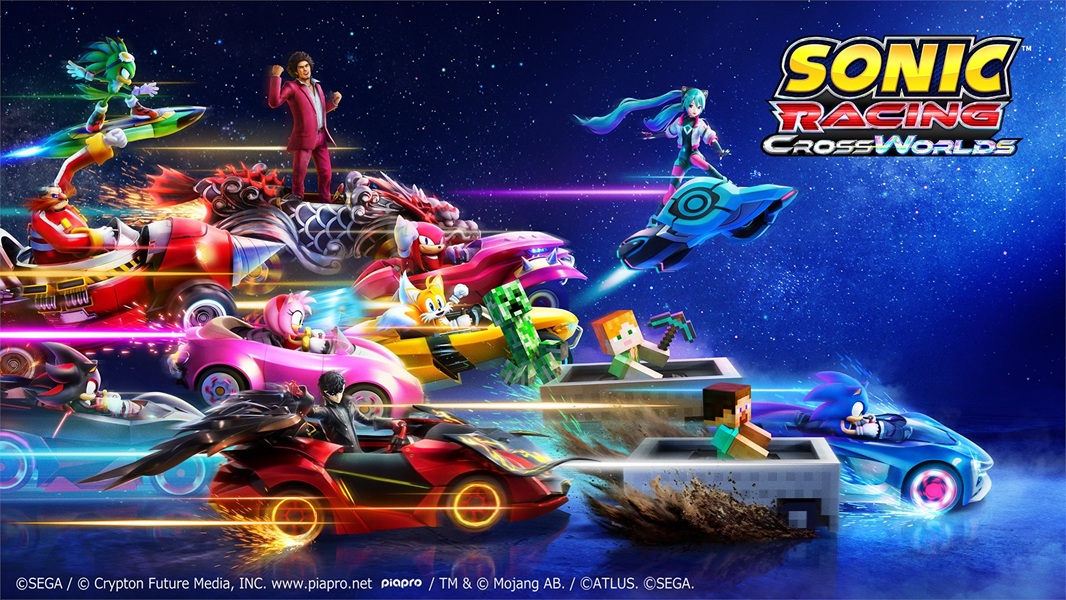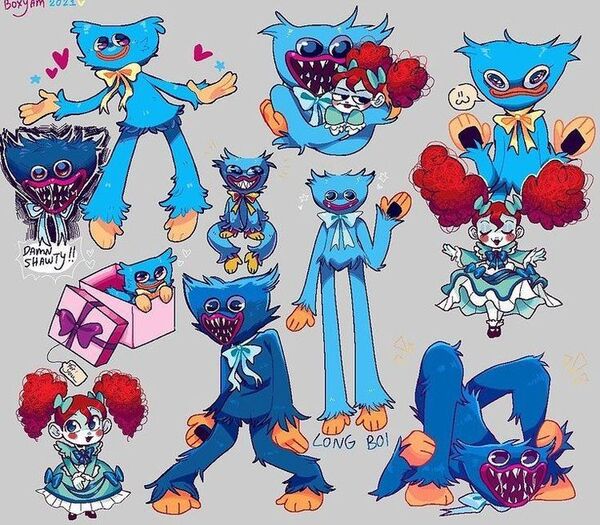In the sprawling, often bewildering landscape of Roblox, where trends emerge and dissipate with dizzying speed, certain experiences manage to capture the zeitgeist with a unique blend of familiar mechanics and current internet culture. Roblox - Steal a Brainrot, developed by BRAZILIAN SPYDER, is a prime example of this phenomenon. Leveraging the burgeoning "brainrot" meme—a term used to describe overly stimulating, often nonsensical internet content—this game plunges players into a frantic, competitive "tycoon" style experience where the goal is not just to accumulate wealth, but to steal the very source of that wealth from others. It's a chaotic, often hilarious, and surprisingly addictive take on base-building and player-versus-player interaction that has quickly carved out its own niche. This review will delve into the strange allure of Steal a Brainrot, dissecting its core gameplay, its controversial but engaging social dynamics, and its overall impact on the Roblox community.
The Meme Machine: From Internet Culture to Roblox Phenomenon (Early 2024 - Present)
The term "brainrot" has become a pervasive descriptor for the overwhelming, often low-quality, and highly repetitive content consumed online, particularly by younger generations. Its integration into a Roblox game concept is a testament to the platform's ability to quickly adapt and monetize emerging internet trends. BRAZILIAN SPYDER, the developer, tapped into this cultural moment with remarkable precision.
Cashing In on Chaos: The "Brainrot" Concept
"Steal a Brainrot" capitalizes on the idea of these digital artifacts being valuable commodities. In the game, "Brainrots" are bizarre, meme-like characters or objects that essentially act as generators, producing in-game cash based on their rarity and type. This unique premise immediately distinguishes it from generic tycoon games. It’s not just about building; it’s about collecting and showcasing these "brainrots" as a form of digital status. The game's success is deeply intertwined with its understanding and appropriation of this specific internet subculture, making it instantly recognizable and appealing to its target demographic.
Rapid Ascent and Viral Spread: A Social Sensation
Since its emergence, Steal a Brainrot has rapidly gained traction on Roblox. Its inherently competitive and chaotic nature makes for excellent viral content on platforms like TikTok and YouTube. Players showcasing their daring heists, elaborate base defenses, or humorous encounters with rivals quickly propelled the game into the top ranks. This organic spread, fueled by content creators, solidified its position as a go-to experience for those looking for quick, high-stakes fun. The simple loop of "build, defend, steal" is easily digestible and highly replayable, contributing to its sustained popularity within the incredibly fast-paced Roblox environment.
Core Gameplay Loop: Acquire, Defend, and Dominate
At its essence, Steal a Brainrot combines elements of an idle game, a base builder, and a player-vs-player combat arena. The core loop is straightforward: build your base, acquire "Brainrots" to generate income, and then use that income to both defend your own Brainrots and steal from others.
The Brainrot Economy: Collecting for Cash
Players begin by establishing a basic base where they can purchase their first few "Brainrots." These peculiar entities, ranging from common to incredibly rare (and visually tied to various internet memes), passively generate in-game currency. The rarer the Brainrot, the higher its income generation. This establishes the "tycoon" aspect of the game: grow your collection, upgrade your base, and expand your wealth. The visual representation of these Brainrots, often intentionally absurd or recognizable, adds a layer of novelty that keeps the collection aspect engaging beyond pure numerical gain.
The Art of Defense: Walls, Traps, and Weapons
As players accumulate valuable Brainrots, they inevitably become targets. The game emphasizes robust base defense. Players can construct walls, deploy various traps (e.g., glue traps, electric floors, spike pits), and strategically place defensive objects to deter intruders. Furthermore, players can equip themselves with a variety of melee weapons (bats, slappers) and potentially ranged options, allowing for direct combat against intruders. This introduces a strategic layer of base layout and resource allocation: how much do you invest in defense versus offense? A well-designed, impenetrable base is a source of pride and a clear indicator of a player's mastery.
The Heist: Raiding Rivals and The Thrill of the Steal
The defining feature of Steal a Brainrot, and what truly sets it apart, is the ability to actively raid and steal Brainrots from other players' bases. This PvP element injects a constant sense of tension and excitement into the otherwise passive tycoon genre.
Infiltrating and Extracting: High-Stakes Robbery
Players can leave the safety of their own base and venture into the open map, where other player bases are located. The objective is to infiltrate an opponent's base, navigate or disable their defenses, defeat any defending players, and then physically "steal" their Brainrots by picking them up and returning them to your own base. Successful heists not only deplete an opponent's income but also instantly boost your own collection. This creates a thrilling cat-and-mouse dynamic, where raiders are constantly looking for weaknesses and defenders are on high alert. The physical act of carrying the stolen Brainrot back to your base, often under fire, adds a tangible, high-stakes element to each theft.
The Consequences of Failure: Risk and Reward
Failing a raid can be costly. If defeated, players lose any Brainrots they were carrying and often a portion of their in-game cash. Conversely, successfully defending your base rewards you with experience and protects your hard-earned assets. This risk-versus-reward system ensures that every decision—whether to raid, to defend, or to invest—carries weight. The unpredictable nature of player interactions means no two raiding experiences are ever the same, fostering a continuously evolving meta of defensive strategies and offensive tactics.
Graphics and Sound: Simple Aesthetics, Effective Chaos
Steal a Brainrot operates within the standard Roblox aesthetic, utilizing its characteristic blocky style, yet effectively conveys the chaotic and meme-driven nature of its theme.
The "Brainrot" Aesthetic: Purposeful Absurdity
The game's visuals are relatively simple but effective. Bases are constructed from basic Roblox primitives, allowing for easy customization and rapid building. The "Brainrots" themselves are the visual stars, often featuring exaggerated, low-resolution, or intentionally crude designs that directly reference popular internet memes. This purposeful "brainrot" aesthetic is key to the game's identity, making it instantly recognizable and appealing to its target demographic. While not graphically intensive, the visual clarity ensures that players can easily identify different Brainrot types, locate enemies, and navigate bases during frantic encounters.
Auditory Feedback: The Sounds of Success and Conflict
The sound design, while not groundbreaking, effectively punctuates key gameplay moments. The satisfying "ka-ching" of money being generated, the distinct thud of a weapon hit, and the triumphant jingle of a successful steal provide crucial auditory feedback. The ambient background sounds are minimal, keeping the focus on player interactions and combat cues. During a raid, the sounds of distant footsteps, weapon swings, and shouts can heighten tension. The auditory experience contributes to the overall chaotic and engaging atmosphere, ensuring that every action and consequence is clearly communicated.
Monetization Model: Robux, Game Passes, and the Pursuit of Power
Like many top Roblox experiences, Steal a Brainrot employs a freemium model, offering various in-app purchases (IAPs) via Robux that provide conveniences, aesthetic customization, and direct gameplay advantages.
Game Passes and Boosts: Accelerating Progress
The game offers several game passes that provide permanent benefits, such as increased cash generation, larger inventory space for carrying stolen Brainrots, or more powerful starting weapons. These passes offer clear advantages and are a primary revenue stream for the developers. Additionally, temporary boosts (e.g., cash multipliers, luck boosts for finding rare Brainrots) can be purchased, allowing players to accelerate their progress and potentially gain an edge in the competitive landscape. While not strictly "pay-to-win" in the sense of making the game unwinnable for free players, these purchases undoubtedly provide a significant leg up.
The "Pay-to-Defend/Steal" Dynamic: Power Imbalance
A more direct impact of monetization is seen in the availability of stronger weapons and defensive structures purchasable with Robux. Players who invest real money can acquire more durable bases and more powerful tools for raiding or defending. This creates a noticeable power imbalance between free-to-play users and those who spend, where a well-equipped "Roblox whale" can dominate the server. While this is common in competitive Roblox games, it's a point of contention for players who prefer a purely skill-based environment. The inclusion of a "Gift system" also allows friends to buy expensive items for each other, further blurring the lines of progression.
Community and Social Dynamics: All's Fair in Love and "Brainrot" War
The social aspect of Steal a Brainrot is central to its appeal, fostering a highly competitive and often hilarious environment where player interactions define the experience.
Competitive Play and Server Dynamics
The game thrives on its player-versus-player (PvP) dynamic. Every base is a potential target, and every other player is a potential threat or victim. This creates a constantly shifting server dynamic, where alliances can form and break, and rivalries emerge based on successful raids or revenge attacks. The thrill of outsmarting a defender, or successfully repelling an attacker, is a powerful motivator for engagement. This competitive tension is a huge draw for players who enjoy direct interaction and the emergent chaos that arises from open-world PvP.
The Role of Private Servers: Peace vs. Pillage
A significant feature, and a common solution to the intense competition, is the availability of private servers. Players can create or join private servers, often for a Robux fee, allowing them to play alone or with a select group of friends without fear of being raided by strangers. This provides a more peaceful environment for base-building and Brainrot collection, and is often used for safe trading or collaborative progression. The existence of private servers highlights the game's core dilemma: some players seek pure collection and building, while others crave the high-stakes thrill of the steal. Many private server links are shared within the game's Discord community, further emphasizing its social underpinnings.
Longevity and Updates: Keeping the Brain Rotting
Like any successful Roblox experience, Steal a Brainrot's long-term viability hinges on consistent updates, new content, and responsive developer engagement to keep its player base hooked.
Regular Content Injection: New Brainrots and Features
To maintain engagement, BRAZILIAN SPYDER regularly introduces new "Brainrots" of varying rarities, new weapons, and additional base defenses. These content drops provide fresh goals for players, encouraging them to hunt for the latest rare Brainrots or experiment with new defensive strategies. The promise of new updates, often teased on social media or Discord, keeps the community invested and returning to the game. Events and limited-time releases also contribute to a sense of urgency and discovery.
Developer Responsiveness and Community Engagement
For a game driven by a live, competitive meta, developer responsiveness to bugs, balance issues, and player feedback is crucial. While official "codes" are not yet a feature, the active presence of developers on platforms like Discord to announce updates, gather feedback, and address player concerns is vital. This ongoing communication builds trust and ensures the game evolves in a way that resonates with its active player base. The game's success relies on this continuous iteration, adapting to player desires and squashing exploits that might arise.
The Downsides: Grind, Exploits, and the "Brainrot" Itself
Despite its undeniable appeal, Steal a Brainrot, like many Roblox experiences, comes with inherent frustrations, particularly around its grind, potential for unfair play, and the very nature of its meme-driven content.
The Grind and Pay-to-Progress Pressure
For free-to-play users, the initial stages of Steal a Brainrot can feel like a significant grind. Earning enough cash to buy rare Brainrots or robust defenses can be a slow process, especially when constantly exposed to raids from more powerful players. This can pressure players to spend Robux to accelerate their progress, leading to a feeling of "pay-to-progress." The high value of top-tier Brainrots and the constant threat of losing them amplify this feeling, making the early game particularly challenging for newcomers without financial investment.
Exploits and Unfair Play: The Wild West of Roblox
Given its competitive nature and player interaction, Steal a Brainrot is unfortunately susceptible to exploits and glitches. Reports of players finding ways to bypass defenses, glitch into bases, or unfairly steal Brainrots are not uncommon. While developers work to patch these, the constant cat-and-mouse game between exploiters and anti-cheat measures can lead to frustrating experiences for legitimate players. The high stakes of losing valuable Brainrots to unfair means can severely impact player morale and potentially drive users away. This "wild west" aspect is a recurring challenge for PvP Roblox games.
The "Brainrot" Aesthetic as a Double-Edged Sword
While the meme-based "brainrot" aesthetic is a core part of its appeal, it can also be seen as a double-edged sword. For players unfamiliar with or disengaged from this particular internet subculture, the game's visuals and humor might fall flat or even be perceived as nonsensical. Furthermore, the very nature of "brainrot" content can be highly subjective; what one player finds amusing, another might find irritating or overly simplistic. This ties the game very closely to a specific, potentially transient, internet trend, which might impact its long-term relevance if the "brainrot" meme itself fades from prominence.
Final Verdict: A Unique Blend of Tycoon and Theft
Roblox - Steal a Brainrot is a fascinating and often exhilarating foray into competitive base-building within the Roblox ecosystem. It cleverly leverages contemporary internet meme culture to create a distinct identity, while its core loop of acquiring, defending, and stealing "Brainrots" provides a constantly engaging and chaotic experience. The thrill of a successful heist and the tension of defending your precious collection are undeniable draws, creating memorable moments of both triumph and despair.
While the game is not without its imperfections—including a noticeable grind for free-to-play users, the occasional presence of exploits, and the polarizing nature of its "brainrot" aesthetic—it delivers on its promise of high-stakes, player-driven fun. For those who enjoy direct player interaction, competitive base-building, and a dose of internet absurdity, Steal a Brainrot offers a unique and highly addictive experience on Roblox. It's a game that thrives on its community's interactions, ensuring that no two sessions are ever quite the same.

 R.E.P.O.
R.E.P.O. is an Early Access online co-op horror game where 1-6 players use a physics-based grabbing tool to extract valuable objects from terrifying environments, battling monsters that are also affected by gravity.
Read full review
R.E.P.O.
R.E.P.O. is an Early Access online co-op horror game where 1-6 players use a physics-based grabbing tool to extract valuable objects from terrifying environments, battling monsters that are also affected by gravity.
Read full review
 Five Nights at Freddy’s
Five Nights at Freddy's is a point-and-click survival horror game where players work as a night security guard at Freddy Fazbear's Pizza, trying to survive shifts from midnight to 6 AM by monitoring cameras and managing limited power to defend against killer animatronics.
Read full review
Five Nights at Freddy’s
Five Nights at Freddy's is a point-and-click survival horror game where players work as a night security guard at Freddy Fazbear's Pizza, trying to survive shifts from midnight to 6 AM by monitoring cameras and managing limited power to defend against killer animatronics.
Read full review
 Into the Dead Our Darkest Days
Into the Dead: Our Darkest Days is an Early Access side-scrolling shelter survival game set in 1980s Texas. Players lead a group of survivors, constantly moving, scavenging, crafting, and fighting zombies to escape the fallen Walton City.
Read full review
Into the Dead Our Darkest Days
Into the Dead: Our Darkest Days is an Early Access side-scrolling shelter survival game set in 1980s Texas. Players lead a group of survivors, constantly moving, scavenging, crafting, and fighting zombies to escape the fallen Walton City.
Read full review
 PARANOIA PLACE
PARANOIA PLACE is a 1-3 player online co-op survival horror game where players must solve puzzles, find randomized items, and escape from a relentless, unpredictable demonic killer in a terrifying, procedurally varied environment.
Read full review
PARANOIA PLACE
PARANOIA PLACE is a 1-3 player online co-op survival horror game where players must solve puzzles, find randomized items, and escape from a relentless, unpredictable demonic killer in a terrifying, procedurally varied environment.
Read full review
 House of Lost Souls
House of Lost Souls is a first-person psychological horror game where Jack returns to his old family home to uncover the truth behind his parents' murder. Players explore distorted memories and discover dark secrets in an immersive, fear-inducing atmosphere.
Read full review
House of Lost Souls
House of Lost Souls is a first-person psychological horror game where Jack returns to his old family home to uncover the truth behind his parents' murder. Players explore distorted memories and discover dark secrets in an immersive, fear-inducing atmosphere.
Read full review
 Poppy Playtime – Chapter 4
Poppy Playtime - Chapter 4 is a single-player horror adventure that takes players into a terrifying underground prison beneath the Playtime Co. factory. Featuring new GrabPack abilities, new monsters, and critical lore revelations, it continues the chilling narrative of the toy factory.
Read full review
Poppy Playtime – Chapter 4
Poppy Playtime - Chapter 4 is a single-player horror adventure that takes players into a terrifying underground prison beneath the Playtime Co. factory. Featuring new GrabPack abilities, new monsters, and critical lore revelations, it continues the chilling narrative of the toy factory.
Read full review



























